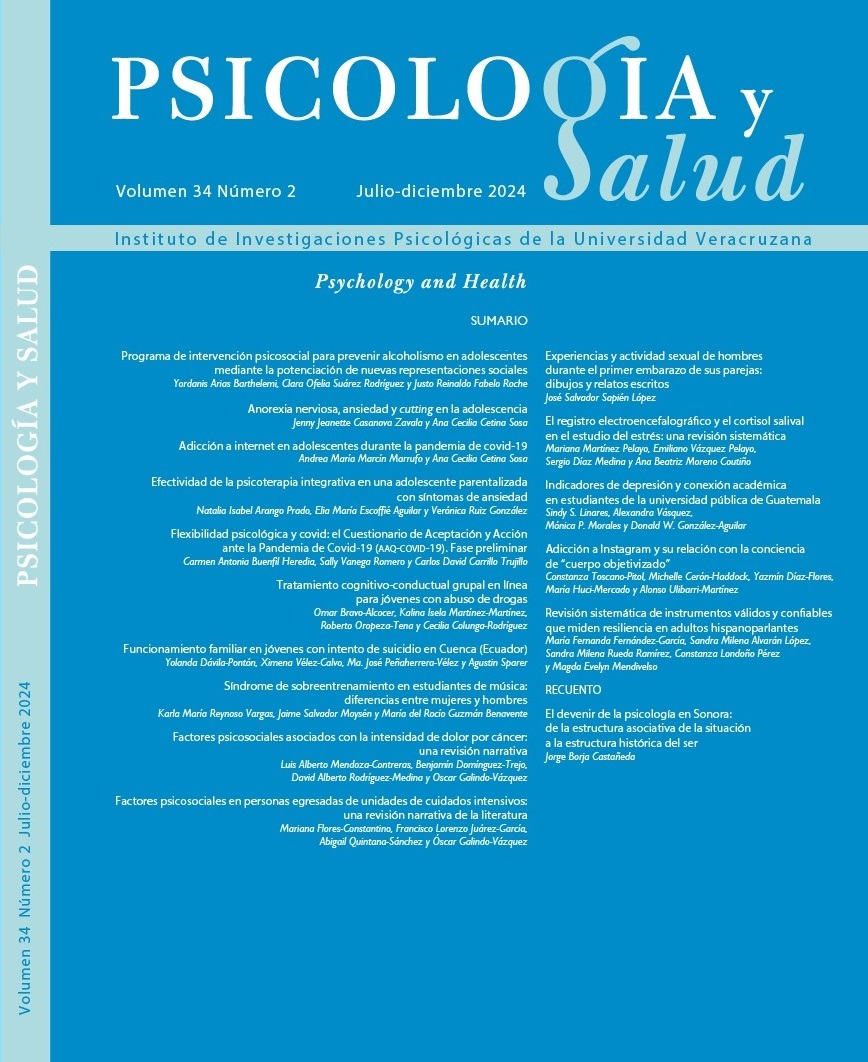Abstract
The present article contains a theoretical review aimed at helping understand the influence of the COVID-19 pandemic on the physical, cognitive, social, and emotional developmental factors of adolescents associated with Internet and electronic device addiction behavior. We also seek to present strategies for proper emotional regulation and psychological well-being. Our literature review stemmed from the background of other pandemics and how these affected the world population, including the current health crisis and the factors that promote addictive behaviors. We conclude with the vital role that parents play at this time as role models for their children, with the expectation that they will model the behaviors they expect their adolescent children to practice.
References
Cardona, Á.M., Valencia, E., Duque, J.H. y Londoño V., D.A. (2015). Construcción de los planes de vida de los jóvenes: una experiencia de investigación en la vereda La Doctora, Sabaneta (Antioquia). Aletheia, 7(2), 90-113.
Castañeda, C. y Ramos, G. (2020). Principales pandemias en la historia de la humanidad. Revista Cubana de Pediatría, 1-24.
Cía, A. (2013). Las adicciones no relacionadas a sustancias (DSM-5, APA, 2013): un primer paso hacia la inclusión de las adicciones conductuales en las clasificaciones categoriales vigentes. Revista de Neuro-Psiquiatría, 76(4), 210-210.
Echeburúa, E. y Requesens, A. (2012). Adicción a las redes sociales y las nuevas tecnologías en niños y adolescentes. Pirámide.
Galeana, P. (2020). Las epidemias a lo largo de la historia. Antropología Americana, 5(10), 13-45.
Goldberg, I. (1995). Internet addiction disorder. Diagnostic criteria. Recuperado de http:// www.iucf.indiana.edu/brown/hyplan/addict.html
González, R. (2015). Las adicciones comportamentales: una tormenta al acecho. Revista del Hospital Psiquiátrico de La Habana, s/p.
Imran, N., Zeshan, M. y Pervaiz, Z. (2020). Mental health considerations for children and adolescents in COVID-19 pandemic. Pakistan Journal of Medical Sciences, 36(COVID19-S4-S67).
Kelley, K.J. y Gruber, E.M. (2010). Psychometric properties of the Problematic Internet Use Questionnaire. Computers in Human Behavior, 26(6), 1838-1845.
Masih, J. y Rajkumar, R. (2019). Internet addiction disorder and mental health in adolescents. Depress & Anxiety, S13. Doi: 10.4172/2167-1044.S13-002
Organización de las Naciones Unidas (2020). Informe de políticas: La COVID-19 y la necesidad de actuar en relación con la salud mental. ONU. Recuperado de https://www.un.org/sites/un2.un.org/files/policy_brief_-_covid_and_mental_health_spanish.pdf
Papalia, D.E., Feldman, R.D. y Martorell G. (2012). Desarrollo humano (12ª ed.). McGraw-Hill.
Salicetia, F. (2015). Internet Addiction Disorder (IAD). Procedia Social and Behavioral Sciences, 1372 – 1376.
Shapira, N.A., Lessig, M.C., Goldsmith, T.D. Szabo, S.T. Lazoritz, M. Gold, M.S., Stein, D.J. (2003). Problematic internet use: proposed classification and diagnostic criteria. Depression & Anxiety, 17(4), 207-216. Doi: 10.1002/da.10094
Sola, J., Rubio, G. y Rodríguez, F. (2013). La impulsividad: ¿antesala de las adicciones comportamentales? Salud y Drogas, 13(2), 145-155.
Soto, A., De Miguel, N. y Díaz, V. (2018). Abordaje de adicciones a nuevas tecnologías: una propuesta de prevención en contexto escolar y tratamiento de rehabilitación. Papeles del Psicólogo, 39(2), 120-126.
Suárez, P. y Vélez, M. (2018). El papel de la familia en el desarrollo social del niño: una mirada desde la afectividad, la comunicación familiar y estilos de educación parental. Psicoespacios, 12(20), 173-198. Doi: 10.25057/issn.2145-2776
Young, K.S. (1998). Compulsive Internet Use Scale. CyberPsychology & Behavior, January, 237-244.

This work is licensed under a Creative Commons Attribution 4.0 International License.
Copyright (c) 2024 Psychology and Health

